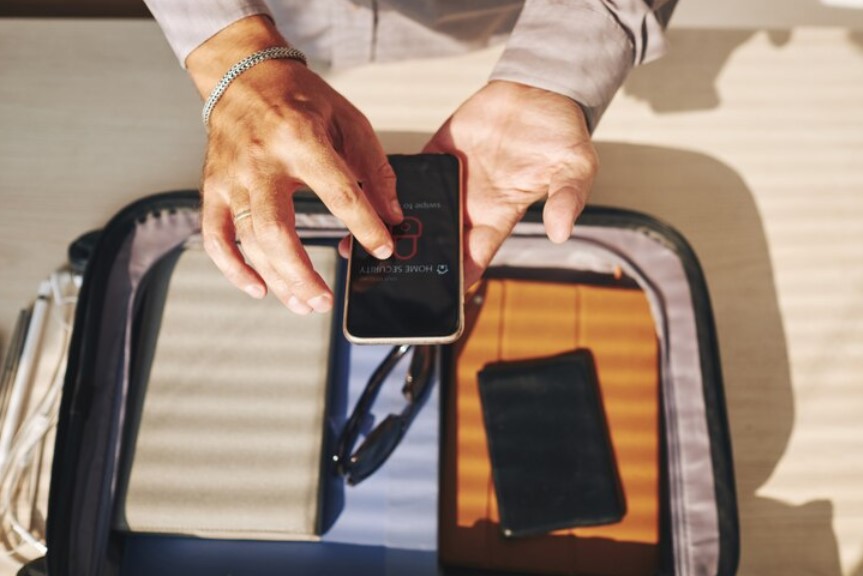
As the number of in-flight incidents involving lithium-ion batteries increases, Flight Centre has issued an urgent advisory for Aussie travellers: know before you pack. New policies from airlines and stricter enforcement by regulators are changing how power banks and spare batteries can be carried—and used—on flights.
Rising Risks Spark Stricter Rules
The warning from Flight Centre comes amid growing global caution following a fire on a Virgin Australia flight, widely believed to have been caused by a power bank stored in an overhead locker.
Australia’s Civil Aviation Safety Authority (CASA) also highlighted a 92% surge in lithium battery-related safety incidents between 2020 and 2022.
What You Need to Know About Airline Rules
General restrictions are tightening worldwide, but some airlines operating in and out of Australia have introduced in-flight bans on using power banks:
According to Boeing safety guidelines, batteries rated between 100 Wh and 160 Wh require airline approval and are limited to two spares, while anything above 160 Wh is forbidden entirely.
Best Practices for Travellers
To help navigate the evolving regulations, Flight Centre and travel experts offer the following guidance:
1. Check Airline Policy Before Flying
Not all airlines follow the same rules. Each carrier may have its own specific guidelines on the size, capacity, and use of power banks onboard. Before packing, visit your airline’s website or contact customer support to confirm what’s allowed. Some may limit the number of devices, while others may ban in-flight charging altogether.
2. Keep Batteries and Power Banks in Your Carry-On Bag
One of the most important rules is to never pack power banks or spare lithium batteries in checked luggage. These items pose a higher fire risk when stored in cargo due to potential overheating or physical damage. Instead, always carry them in your hand luggage, where the cabin crew can quickly address any issue.
3. Do Not Use or Charge Power Banks In-Flight If Prohibited
Even if you’re allowed to bring a power bank onboard, that doesn’t always mean you’re allowed to use it. Some airlines strictly prohibit the use or charging of power banks during the flight, due to the risk of overheating. Check onboard announcements or ask the crew before plugging in.
4. Protect Spare Batteries with Proper Packaging
Spare lithium-ion batteries should be individually protected to prevent short-circuits. The safest practice is to tape over the terminals and store each battery separately in a protective pouch or case. Never let loose batteries roll around in your bag, especially near keys or metal objects.
5. Use Airport Charging Areas Before Boarding
To avoid having to charge devices mid-flight, make use of airport charging stations before you board. These areas are safer, often faster, and won’t conflict with inflight restrictions. Planning ahead also means you’ll have a full battery when you land—a bonus for navigating unfamiliar destinations.
6. Choose Reputable, Tested Power Bank Brands
While it may be tempting to grab a cheap, no-name power bank online, experts warn against it. Poor-quality or untested devices carry a higher risk of thermal runaway, a chain reaction that can cause fires or explosions. Look for units with safety certifications and reviews, and avoid those without clear technical specifications.
Why Charging Rules Are Tightening
Bottom Line
With airline inflight power bank bans becoming more common, it's vital travellers double-check their carrier’s rules before packing:
These restrictions aim to protect passengers and aircraft—and with good reason—so staying informed is more than just smart travel; it’s safe travel.
For travellers navigating longer trips, layovers, or unexpected delays, having access to secure and convenient accommodation near major airports or hospitals adds another layer of confidence. Providers like Corporate Keys offer fully furnished, short- to medium-term apartments tailored for both business and medical travellers. These stays give guests the comfort and flexibility to charge devices safely, rest between flights, or remain close to loved ones undergoing treatment—making travel smoother and smarter from start to finish.
By packing responsibly and planning thoughtfully, travellers can stay powered up and protected—wherever the journey leads.